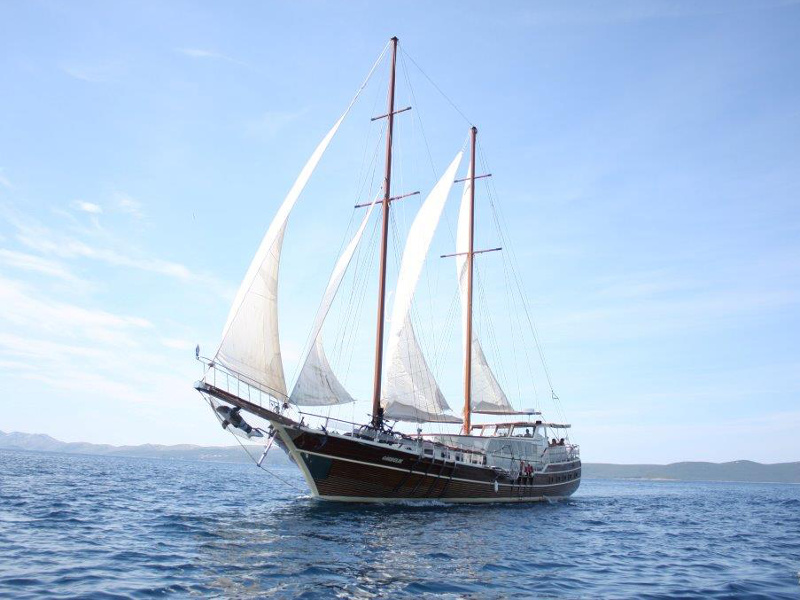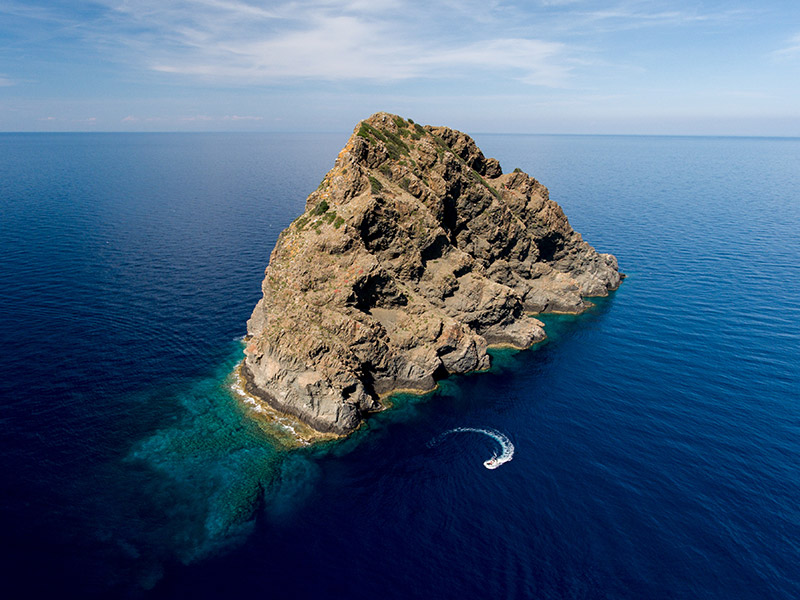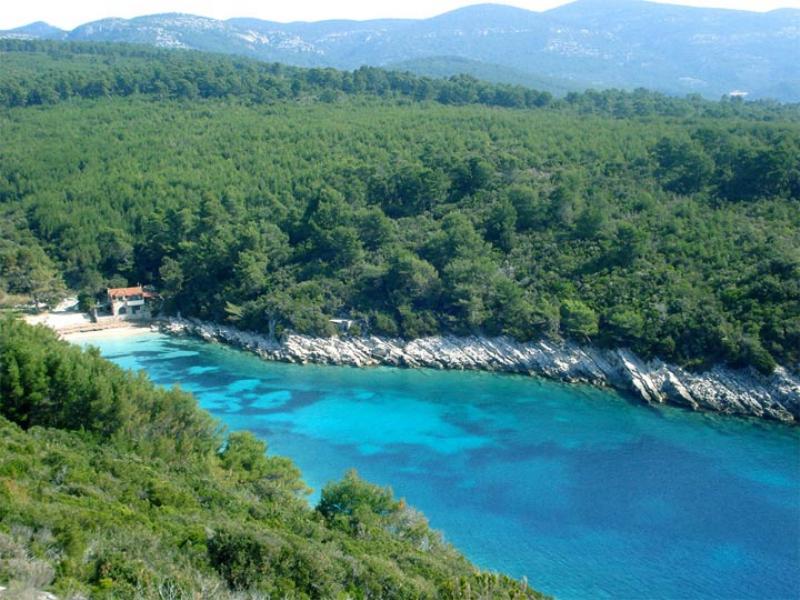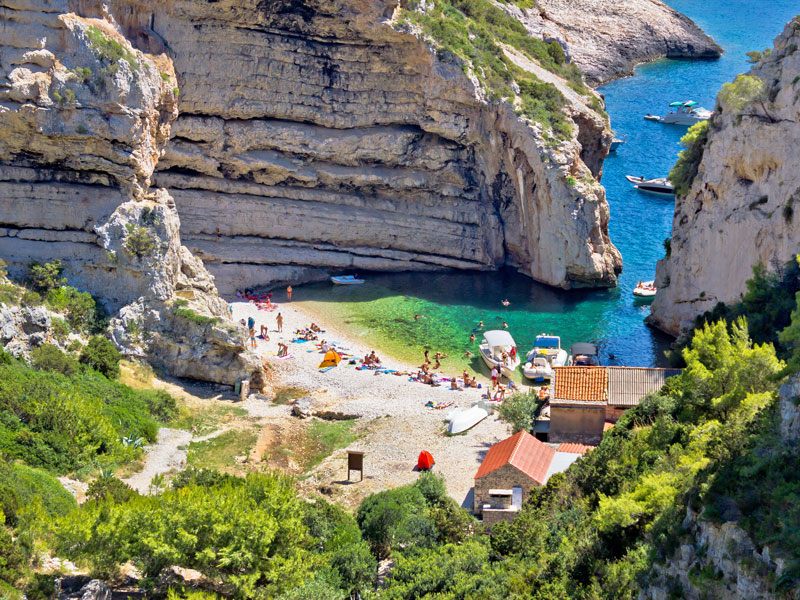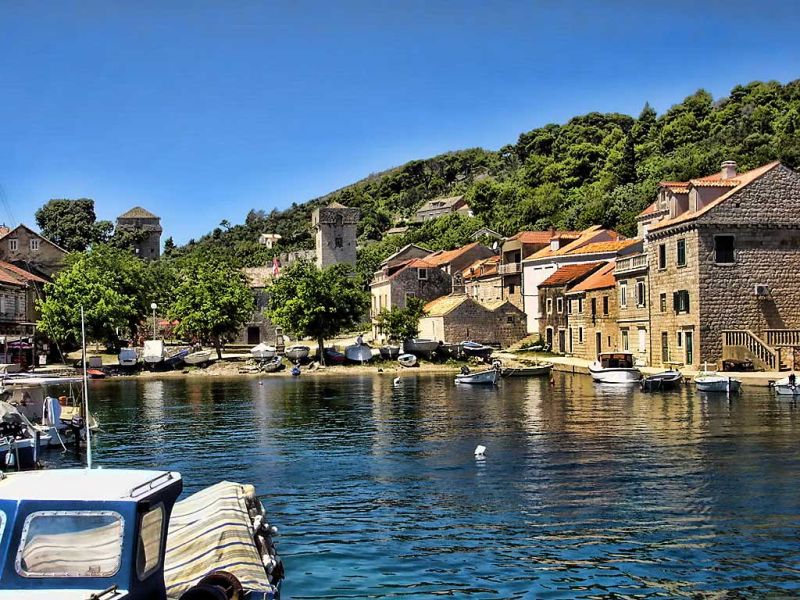Cruising Dalmatia
If you are you perhaps a group of friends, teambuilding, you want to be alone without stress, to explore Adriatic coast, it is for you.
Friends, gay friendly, teambuilding, LGBT, it is for you. Relax, local food, fun, you can take your bike and let’s go.
Did you visit Croatia, our islands? However, if you are looking for the ultimate in relaxing vacations, a cruise is the way to go. Cozy and Quiet Places to Escape, find a quiet spot on deck for some peaceful lounging in the sun.
It’s easy to make yourself unplug on a cruise, just shut your phone off when you board, and forget about what’s going on at work and at home.
Unplugging might just be the most freeing and relaxing thing you can do on your cruise. A brisk morning walk around the deck of the ship can help you release stress and clear your mind.
Please, there is no TV, without newspaper, just relax, rest for body and soul.
Cruising from Split to Dubrovnik, or cruising around islands.
Brač, Hvar, Pakleni islands, Šolta, Mljet, Elaphiti islands….It is Dalmatia.
We can make a route together.
This type of a holiday is quite an adventure. I would definitely recommend it to everyone wanting to experience real sailing. The chef prepares meals for you. This gives you a chance to taste local food and enjoy sun and sea while you are on the ship. Nice, isn’t it?
That vessel changed its look and become luxury sailboat of the first class. Beautiful Gardelin, like a bird.
For all people who love sea, enjoy the sun, love chilling on the deck and having a crew who will prepare everything for you, a gulet is the perfect choice.
Gardelin is 28m long and 6,9m wide. It has got 6 cabins and each of them has got WC and shower. The whole ship is air conditioned (saloon, rooms). The crew is consisted of captain, chef and sailor (mechanic). The ship owner has a very long experience doing this kind of work on various yachts in Monte Carlo.
Except the inner saloon, there is also the outer saloon placed on the stern.
TV, DVD, CD are also available and are also able to offer (banana-boat skiing, surfing, 2 canoes and tender Maestral 4,60 m long). Route of our cruising are from Zadar to Dubrovnik.
Accommodation:
– 6 cabins ( 4 double, 2 triple)
– Accommodation for 12 people maximum, 16 if the group has a children until 7 years old)
– Air-conditioning
– Comfortable salon
CREW:
– 3 crew members: captain, chef , engineer, deckhand + hostess (on request)
Included in the price:
7 nights of accommodation
permits, insurance
all equipment on board
tender with outboard engine
linens and towels, bed sheets
snacks: 5 o’clock tea and snacks, welcome drink on embarkation day
Food options (obligatory):
Breakfast, lunch 350€ per person/week
Advanced half board (breakfast, lunch, 3 x dinner): 450€/person/week
Beverage options:
100€ per person on week, domestic non alcoholic drinks, water, carbonated drinks, juices)
All inclusive domestic drink package: 200€/person/week (domestic non alcoholic and alcoholic drinks water, carbonated drinks, juices, bottled wine, beer, local spirits, coffee, tea, clients can bring their drinks free of charge if they choose this package;
Corkage fee 700€/group/week (if clients just wish to bring their own drinks on board)
Excluded:
transfer to the yacht, hotel or airport
gratuities tips for the crew
drinks on board
port tax 800€ per week
All conditions 5 hours a day is for free, extra 25€ per hour.
Discover Dalmatian coast, and gulet. We are waiting for you on the Adriatic coast. It’s easy to make yourself unplug on a cruise, just shut your phone off when you board, and forget about what’s going on at work and at home. Let’s go Croatia, let dreams come true.
Available departures
Trogir

Trogir is situated in the middle of Dalmatia, on the Adriatic coast. Due to its position and natural protection, it is one of the most popular sea-ports and destinations for nautical tourists. Every summer you can see the best yachts there, famous people and lot of tourists. It is a destination to spend a nice vacation, to enjoy gastro offer, to see historical beauty…
In the past, the town was one of the cultural centers of Dalmatia. Master Radovan and Ivan Lucius made famous sculptors, paintings and architectures. The Radovan Portal was finished in 1240. and it is a unique monumental work of this great Croatian artist. The old town has been formed between the 13th and 15th century inside defense walls that were restored by Venice in the 15th century. You can see two forts that are still preserved: Castle Kamerlengo and the Tower of Saint Marc. Castle Kamerlengo is situated in the south-west side of the island from the 15th century. South of the castle is the tower of Saint Marc also from the 15th century.
The entrance into the town from the north is through the renaissance town gates from the 17th century with the sculpture of Blessed John Orsini, the patron of the town. On the main square is the cathedral from the 13th – 15th century with characteristics of both Romanesque and Gothic styles. The entrance of the cathedral holds the most valuable work of the Romanesque sculpture in Dalmatia and it is the portal of master Radovan from 1240. The most beautiful objects from the treasury are ivory Gothic triptych, embroideries and medieval illuminated codices.
St. Lovre’s cathedral is from the 13th to 17th century so we can find different styles there: Romanic, Gothic, Renaissance and Baroque.
There is a baptistery from the 15th century. There is a famous Radovan’s Portal from the 13th century, Saint John’s Chapel is from 15th century and represents a masterpiece of European Renaissance.
The cathedral’s sacristy and treasury date from the 15th century.
Trogir is on the UNESCO list of the World Cultural Heritage as the best preserved Romanesque-Gothic town in Central Europe.
The gastronomy of Trogir is a typical Mediterranean with lots of fish and seafood, olive oil, cheese, pršut (smoked Dalmatian ham).
Two typical dishes are ‘pašticada’ and ‘rafijol’. You must try the autochthonous Dalmatian wines, like ‘Pošip’, ‘Babić’ and many others.
If you like a small town, history, Trogir is the right choice for you.
Enjoy Trogir and Croatia.
Read moreSplit

- Split is the second largest city in Croatia.It is economic, administrative, educational, sport and tourist center. The first inhabitant of Split was the Roman emperor Diocletian who started to build his palace in this friendly bay around 293 AD. After his abdication he withdrew to this luxurious palace of about 30 thousand square meters.
The following turbulent centuries made the palace into a town. The town overgrew the walls of the palace and its authorities kept changing – from Croatian kings in 10th century AD, Hungarian and Venetian administration, to French rulers and Austro-Hungarian monarchy.
Such past left its traces. This mixture of historic layers brought some clumsiness and today all that makes a part of its originality.
The big city today lives by the silent beats of history, lively spirit of the young and its particular Mediterranean charm.
Marjan hill is the first symbol of the town of Split. The people of Split started the forestation of Marjan in 1852, with the planting of the first pine trees. In 1903, society “Marjan” was founded which today takes care of this nature preserve. All the visitors in Marjan can enjoy its peace and quiet, recreation and entertainment, numerous small churches, hermit refuges and natural and jogging paths. A modest zoo is great fun for children.
- In the 11th century a church “Gospa od Zvonika”‘ was built, originally dedicated to St. Teodor, with a beautiful early-Romanesque bell tower. During the Middle Ages the area served as a courtroom, and only 50 years ago it was a haven for small shops. Especially is interesting the specific style of residential construction in the wall, bell tower, part of the guard pathway over the remains of the octagonal towers and a beautiful view of the entire decumanus and a part of the People’s square.
Prokurative is synonymous with portico, decorated promenades of cardo and decumanus, main streets of the Diocletian’s Palace.
This architectural details was used by the Venetians on their central square in front of the cathedral of St. Marco.
Bačvice is a phenomenon of nature, a sandy beach at the heart of the city, in the vicinity of the city harbor, and it can accommodate about r ten thousand people. In springtime Bačvice turn into a split version of Copacabana where many famous soccer players first displayed their talent, where the rugby in Split was born, where even in wintertime a unique game of “picigin” is played (a sort of volleyball, played in the sea shallows with a small ball).
Bačvice today represents a best known promenade for all generations, and during nighttime is the favorite center of nightlife.
Visit Split and enjoy Croatia!!
Read moreZadar
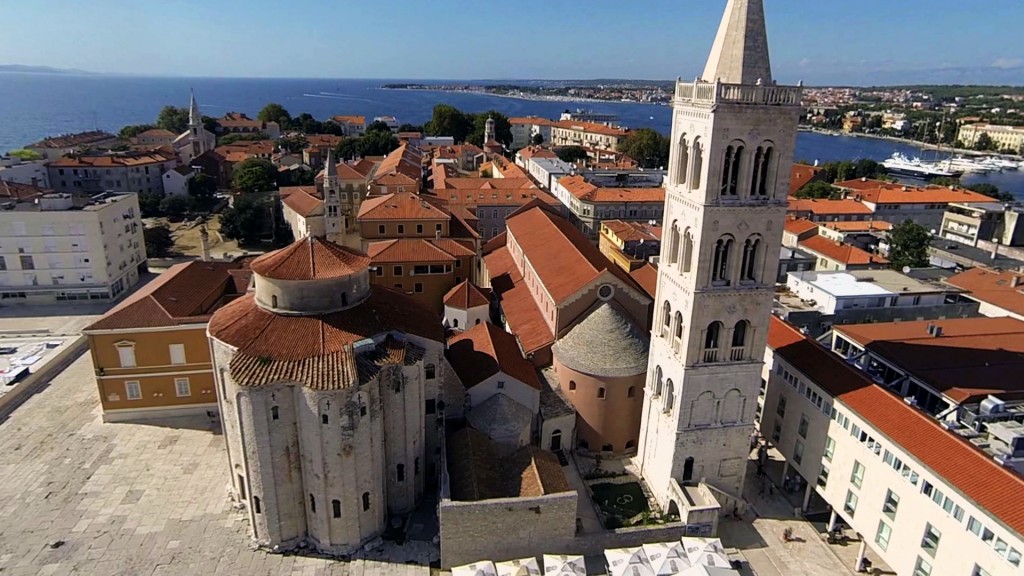
Zadar is a city located on the coast of the Adriatic Sea. It is the historical centre of Dalmatia. The city walls were built in the time of Julius Caesar. Zadar was ruled by the Romans, Byzantines, Venetians and French.
- The patron saints of Zadar are St Anastasia, St Krševan, St Simon and St Zoilo . The main street is called Kalelarga. In the centre of town, there is the Roman Forum and the circular church, St Donat from the 9th century. In front of the church extends the ancient main Roman square. The main street which stretches from east to west is Kalelarga or Broad Street.
Zadar is a city with a rich history, many monuments and churches. In the city centre you can see St Anastasia Cathedral, the Church of Our Lady of Health, St Mary Church, St Krsevan Church, St Dominic Church and St Simon Church.
Alfred Hitchcock proclaimed Zadar`s sunset „the most beautiful in the world“. There is a “must see“ – the Sea Organ, sitting there on the rocky coast which has been turned into steps, you can enjoy the sounds of the sea organ. Also on offer is the view of the Welcome to the Sun which is a connection of lights in rhythm with the waves and sounds.
One trademark of the city is the ” barkarioli “ which for 800 years has every day connected the two parts of the old port. To feel the breath of the past, it is enough to walk the city park Queen Jelena.
- Zadar is a town which offers accommodation, cultural heritage and gastronomic cuisine. To get acquainted with the history of Zadar, visitors can go back in time. A walk across stone streets will become a walk through history, and also an experience of modern life. Zadar is a city you will certainly come back to , and you will want to take the original Zadar Maraschino liqueur with you .
Near Zadar, there are the Kornati National Park, Paklenica National Park, Krka National Park and Plitvice Lakes National Park.
One who comes to Zadar and Croatia will return again!
Read moreDubrovnik
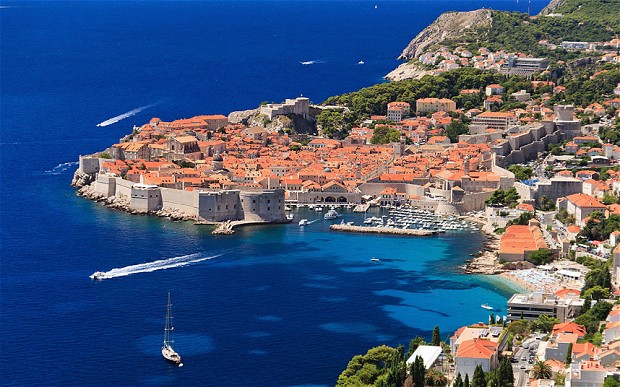
Dubrovnik is located on the thin coast strip between the high hills and the calmness of the Adriatic sea.
The ‘Pearl of the Adriatic’, on the Dalmatian coast, was an important Mediterranean sea power from the 13th century. Dubrovnik was founded in the first half of the 7th century by a group of refugees from Epidaurum, who established their settlement at the island and named it Laus. The Latin name Ragusa (Rausa), in use until the 15th century, originated from the rock (Lat. lausa = rock). Opposite that location, at the foot of Srđ Mountain, the Slavs developed their own settlement under the name of Dubrovnik, derived from the Croatian word dubrava, which means oak woods.
In 1979, the city of Dubrovnik joined the UNESCO list of World Heritage Sites.
Counting only about 35 000 people Dubrovnik is the cultural and social center of the region.
Vegetation in the region is typical, mostly Mediterranean, and it is a result of hundreds of years of human influence. As suited for a merchant harbour city, Dubrovnik mariners traveled far and wide bringing home many tropical and sub-tropical cultures, creating an interesting mixture of plant life.
The name of the most famous street of Dubrovnik is Placa (Stradun) street .
- Dubrovnik is a remarkably well-preserved example of a late-medieval walled city, with a regular street layout. Among the outstanding medieval, Renaissance and Baroque monuments within the magnificent fortifications and the monumental gates to the city are the Town Hall (now the Rector’s Palace), dating from the 11th century; the Franciscan Monastery with its imposing church; the extensive Dominican Monastery; the cathedral (rebuilt after the 1667 earthquake); the customs house (Sponza), the eclectic appearance of which reveals the fact that it is the work of several hands over many years; and a number of other Baroque churches, such as that of St Blaise (patron saint of the city).
The original World Heritage site consisted solely of the defences and the intra-mural city.
It includes the Pile medieval industrial suburb,the Lovrijenac Fortress, located on a cliff,the Lazarets,the Revelin Fortress.
The island of Lokrum lies to the south-east of Dubrovnik, some 500 m from the coast. In 1023 it became a Benedictine abbey.
Dubrovnik is Croatia’s most famous coastal city.
Read moreFacilities
- Breakfast
- TV
- Wi-Fi

